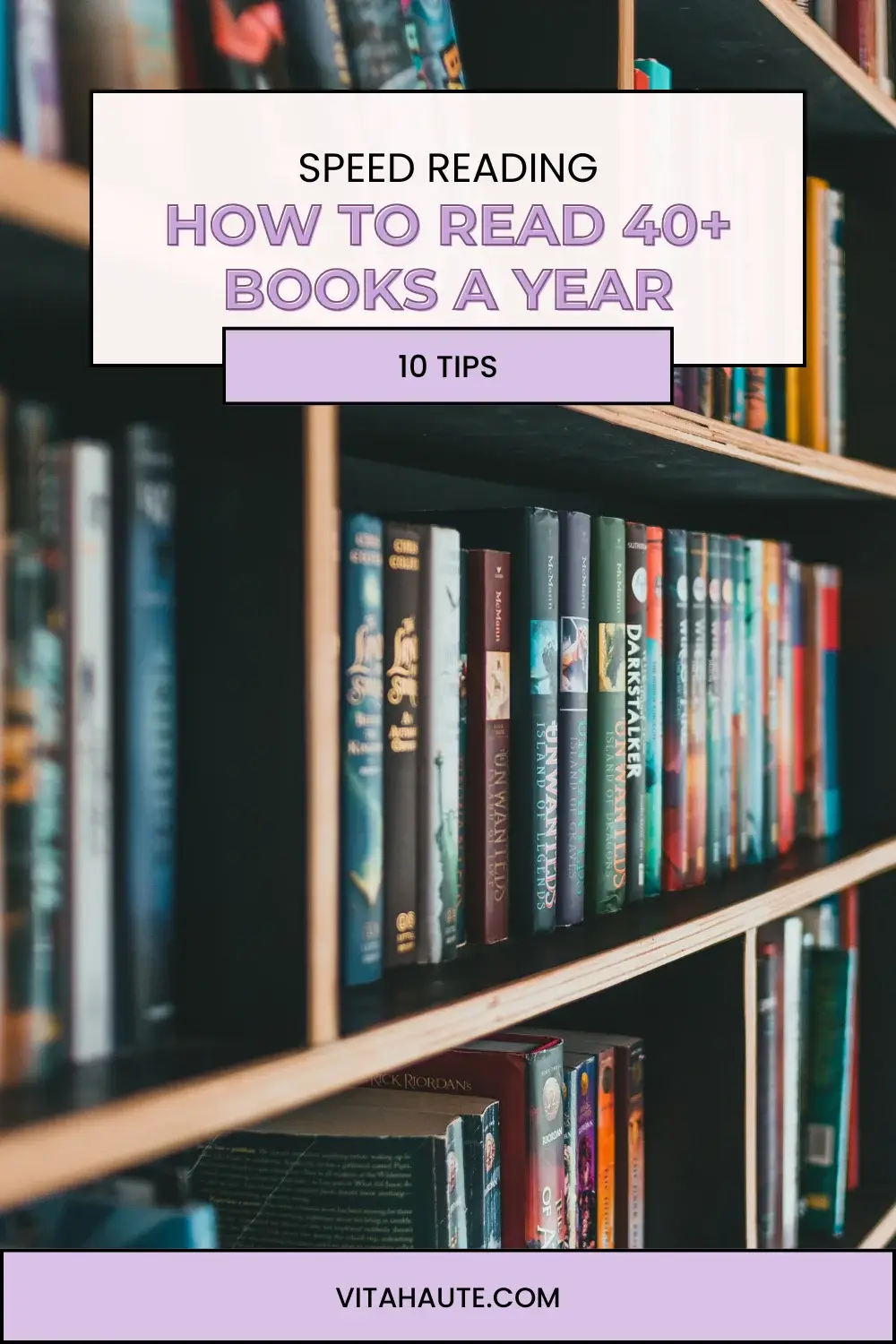To be honest, I don’t believe that using these speed reading techniques will make you the fastest reader alive. But it will bring you closer to that goal.
Speed reading is defined as reading and comprehending the text faster by taking chunks of texts instead of individual words and employing other speed reading training strategies.
You must be wondering: what is considered “speed reading”?
The average reading rate is 200-300 wpm, but you can increase your reading speed to 1500 wpm or beyond by employing speed reading techniques. Isn’t it incredible? I know it is. Let me now share with you some tips that will have you reaping some fantastic benefits of speed reading.
This post contains affiliate links. Please read our disclosure.

1. Read in Chunks
Your eyes can take in multiple words at once.
Using the word-chunking strategy, you can read quicker. To read a section of the text at a time, move your eyes through the text. The idea of reducing the inner monologue is strongly related to word-chunking. Reading every word of a text slows down your reading speed. Concentrate on the first and last words of the text, or a few words at a time, which will provide you with the meaning by reading only around half of the words. Your comprehension rate and speed reading ability will improve dramatically once you start taking chunks of words.
- Concentrate on reading three words at one glance.
- Combine the words and read them at a glance as if they were a road sign.
Pro tip: Looking at every fifth or sixth word allows you to take in more information at once and reduces sub-vocalization.
2. Use a Pointer for Meta-Guiding
Meta-guiding is a speed reading technique that guides your eyes through the text by moving a pointer fast. You can use your finger, a pen, stylus, etc., as a pointer. You have to race the pointer speedily underneath the lines and trace the pointer with your eyes. This method is also called “hand pacing”—when you specifically use your finger. One of its pioneers, Evelyn Nielsen Wood, a Utah schoolteacher, claimed that meta-guiding or hand pacing might increase your reading rate to 2,700 wpm.
At first, you may have a low comprehension rate, and your eyes may struggle to follow the pointer, but you will improve gradually.
Pro tip: You can make meta guiding even more effective by trying to increase the number of words and speeding up the time every time you read.
3. Avoid Sub-Vocalization
Subvocalization reduces our reading speed to that of a conversation, which is usually approximately 300 words per minute. It’s moving at a snail’s pace! While reading, sub-vocalization is speaking the words in your head. It’s a typical characteristic among readers who pronounce the words aloud or move their lips while reading.
You can nearly quadruple your reading speed by turning off that inner monologue. If you want to enhance your reading speed, attempt to avoid sub-vocalization while reading. It may be challenging at first, but you can overcome it with practice. Words are processed significantly more quickly by your eyes and brain. The easiest thing to do is be aware of it and find a way to divert your attention away from it.
You can guide your reading with your fingertip, listen to music, or chew gum to reduce subvocalization. Increase your reading speed by focusing on seeing rather than hearing the words.
Pro tip: When reading, press the tip of your tongue on the roof of your mouth to speed up the process. This minor alteration can serve as a gentle reminder that you shouldn’t sound out each word.
4. Limit Regression and Back-Skipping
Regression or back-skipping can hinder your speed reading progress!
Regression or back-skipping means jumping back to previously read sentences or paragraphs and rereading. Sometimes, when you read the text passively or too fast and cannot understand the material, you tend to reread the text. This is fine when you’d like to recheck facts. Perhaps they’re important to say a project you’re working on. Or maybe you’re reading a history book and are working on a term paper and need it to be factual.
But if interested in becoming a speed reader, then regression or back-skipping is something you must strive to overcome.
But how do you avoid regression and speed up reading? Here are two highly effective ways to do so:
- Ask Questions: You back-skip mostly because of passivity and lack of attention. Therefore, you can avoid regression by asking questions and finding their answers while reading. Asking questions like “What is the main idea presented in the text?” or “How is the subsequent paragraph related to the previous one?” can help you concentrate and avoid regression.
- Cover with Gliding: Another solution is gliding, in which you cover the text with an envelope or a card as soon as you read it. Knowing there’s no way back, you’re more likely to focus on the text attentively.
Pro tip: You may revisit details for better comprehension, but reading attentively the first time is ideal.
5. Skim the Text
Skimming is one of the most effective speed reading techniques. Skimming helps you quickly get the key information and avoid wasting time on extra details.
- Quickly reading the headings, subheadings, & titles
- Reading italicized, bold, or underlined text
- Looking at diagrams, charts, maps, etc.
- Highlighting unfamiliar terms or ideas
- Reading the topic and concluding sentences
- Reading prefaces and epilogues
Pro tip: Use skimming as a reading strategy for complex texts and speed reading for easier ones.
6. Scan the Text
Sometimes, you need to quickly find a specific idea, phrase, sentence, or word in a lengthy text. That’s when you scan the text.
- Identify the keyword or idea you want to find.
- Keep the idea or word in mind.
- Quickly scurry your eyes over the text while avoiding irrelevant text.
Pro tip: Scan both academic and professional texts to locate key information efficiently.
7. Eliminate Distractions
The last but not the least speed reading trick is to avoid distractions while reading. When you read in a calm environment, you can focus better and read faster.
- Reading in a library
- Keeping only essential reading materials
- Turning off phone notifications
Pro tip: Begin with a genre that interests you to establish the habit of avoiding distractions.
Conclusion | Practical Speed Reading Tips:
By mastering speed reading techniques, you can achieve a range of benefits that will boost both your productivity and personal growth:
- Meet reading deadlines with ease.
- Study as many books as you desire without feeling overwhelmed.
- Improve your comprehension speed, allowing you to grasp more information in less time.
- Gain confidence in your cognitive abilities, knowing you’re absorbing information more efficiently.
- Enhance your focus, making reading sessions more productive.
- Free up more time for critical tasks or simply relax, thanks to your newfound efficiency.
With consistent practice, you’ll not only enhance your reading skills but also unlock more time and mental energy for other important areas of your life.
Enjoy your journey on the speed-reading roller coaster!
Becoming a faster reader can also help improve your writing process—especially when you’re facing writer’s block.

